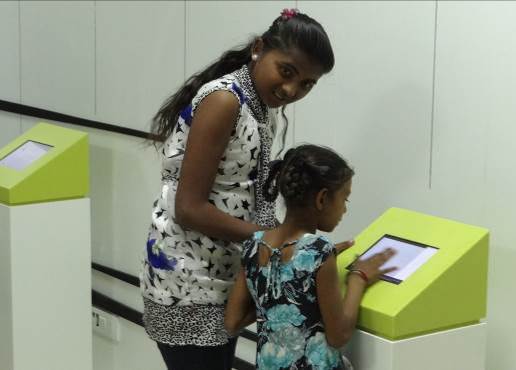28 Nov, 2016
On 28th November 2016, Shri Kuldeep Goel, Principal Chief Conservator of Forest (PCCF-Wildlife), Government of Gujarat, and Dr. Konrad Uebelhoer, Director, Indo-German Biodiversity Programme, presided over the opening of the completely renovated and redesigned Interpretation Centre at the Khijadiya Bird Sanctuary, Jamnagar.
The refurbishing was made possible through a cooperation between the Gujarat Forest Department, the CMPA Project, and TATA Chemicals. The Forest Department ascertained the renovation of the building, improvement of facilities, and the necessary landscaping. The CMPA Project provided technical assistance through engaging the services of Archimedes Exhibitions, a German communications agency specialising in science and research. While the design was developed in Germany, thematic focus and content were generated in collaboration with the Gujarat Forest Department and other experts in the field. TATA Chemicals provided the funds necessary for acquiring the exhibits produced in Germany. The general layout for the exhibits followed closely the one developed for the Coastal and Marine Biodiversity Centre, Airoli in Maharashtra.
After the opening ceremony, Shri Shyamal Tikadar, CCF, Jamnagar, took the invited guests on a tour of the facilities to present an overview of the concept und realisation of the new Interpretation Centre. Khijadiya being an important bird sanctuary, both for migrating and resident birds, the thematic focus is naturally on the ecology of birds. However, coastal biodiversity and its role in supporting healthy ecosystems are also widely presented. A range of different experiences (seeing, listening, touching) let the visitor appreciate the beauty of nature, but also informs about the threats to which many coastal ecosystems are exposed. By engaging the visitor emotionally, it is hoped to inspire a lasting interest in nature and its protection and conservation.

Shri Shyamal Tikadar, explains the use of a (magnetic) “torch” to explore a presentation of nocturnal wildlife.
.jpg)
An exhibition room with a topographic model of the area and a “listening station” in the background.

Children enjoy the exploration of interesting facts on the interactive media station.
© 2014 IGBP. All Rights Reserved.
Site By: Virtualpages
